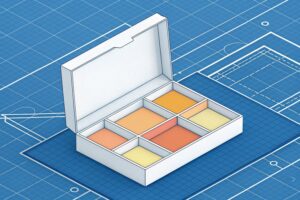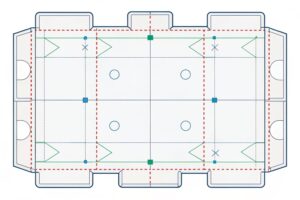I face tight budgets, fast launch cycles, and rising expectations. I also see shoppers who want speed and clarity. I use cardboard displays to link products and stories fast.
Cross-merchandising with retail displays means placing related items together on purpose, then using clear signs, structure, and color to drive a bigger basket while helping shoppers decide fast.
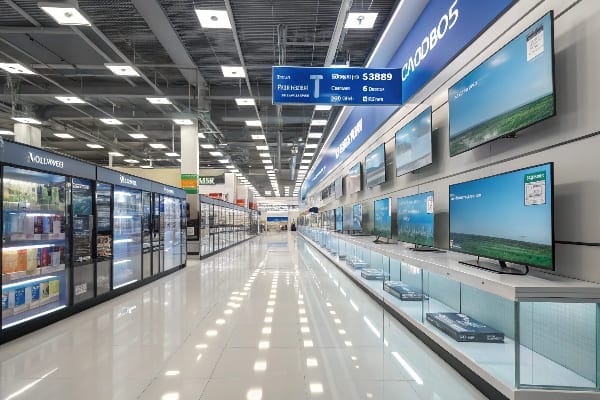
I will show proven steps that I use in the field. I will keep it simple. I will explain why cardboard displays work, how I link categories, and how I size risk and cost.
What is cross merchandising strategy?
Shoppers move fast and forget items. Teams work in silos. I solve both by pairing products that belong in the same moment, not the same aisle.
A cross-merchandising strategy groups complementary products around one use case, then supports it with a themed display, simple copy, and clear price cues to remove friction and lift units per transaction.
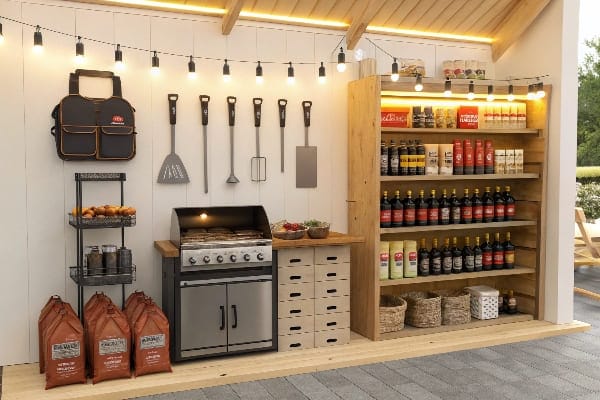
How cross-merchandising1 works, step by step
I start with one shopper job. I map every accessory for that job. I design a compact, sturdy, and branded cardboard display2 that fits the traffic flow. I test a small batch first. I watch pick-up order and price sensitivity. I then scale to floor, pallet, or counter forms. In outdoor retail, I group crossbows with bolts, wax, and safety straps. In beauty, I pair cleanser, toner, and travel minis. In grocery, I link pasta with sauce and a parmesan single-serve. I use flat-pack designs for speed and lower freight. I rely on digital print for short runs and rapid edits. I plan for moisture and strength with better liners when needed.
Quick framework
| Step | Goal | Display choice | Measure |
|---|---|---|---|
| Define one use case | Focus | Counter or endcap | Attach rate3 |
| Curate 3–5 items | Avoid overload | Shelf trays | Time to pick4 |
| Design clear sign | Reduce doubt | Header card | Conversion |
| Price ladder | Offer choice | Tiered bays | Margin mix |
What is merchandising strategy in retail?
Many teams think merchandising is only a planogram. I think it is a promise. The shelf must match how shoppers decide and how the brand creates trust.
A retail merchandising strategy sets how products, prices, space, and stories work together in each zone so shoppers see, understand, and buy with less effort and more confidence.

The pillars I use in the factory and in stores
I set the role of each zone: traffic stop, dwell zone, or quick grab. I choose cardboard displays5 that match the role. Floor units create impact for launches. Counter units drive impulse. Pallet displays move volume in clubs. I keep copy short and useful. I place price points in a simple ladder. I control color so the product stands out more than the print. I plan durability with single-wall or stronger corrugated as needed. I test carry load and edge crush. I use digital print6 when I need fast changes for holidays. I track returns and damage to refine packaging. I also watch tariffs and paper costs. I reduce risk with light, modular designs and recycled fibers when possible. This plan turns display spend into predictable outcomes.
Strategy map
| Pillar | Question | Action |
|---|---|---|
| Space | Where to stop? | Endcap + floor unit |
| Price | What is good/better/best? | Three tiers7 |
| Story | Why now? | One-line benefit |
| Proof | Can it hold? | Strength test logs8 |
What is the best way to display merchandise?
The best display is not the biggest. It is the clearest. It helps the eye, the hand, and the wallet move in one line.
The best way is to make one job obvious, keep choices tight, stage touch points at hand height, and show price and benefit together on a sturdy, right-sized display.

A simple blueprint I repeat
I start with sightlines9. Headers sit just above eye level. I keep product faces forward with die-cut retainers. I use wide openings for larger boxes. I keep most weight between knee and chest height. I place the top seller dead center. I avoid more than five SKUs per small bay. I print a short benefit near the price. I add a QR for specs10 or a 30-second demo clip. I avoid gloss glare under store lights. I mark restock lines inside the tray. I add a small “complete the set” card to drive a second pick. In a recent outdoor launch, this setup raised bolt-with-bow attach rate from trial to habit. The key was clear steps and fast reads. The display did the work.
| Element | Rule of thumb | Why it helps |
|---|---|---|
| SKU count11 | 3–5 per bay | Lower choice stress |
| Copy length12 | 7–10 words | Faster scan |
| Price tags | Left-to-right ladder | Easy compare |
| Access | One-hand grab | Quick pick |
What are the strategic decisions of merchandising in retail?
Good results come from a few hard choices made early. I choose where to win, where to hold, and where to test.
Key decisions cover assortment breadth, price architecture, display format, space share, print method, material strength, sustainability level, and the test-and-roll cadence by season.
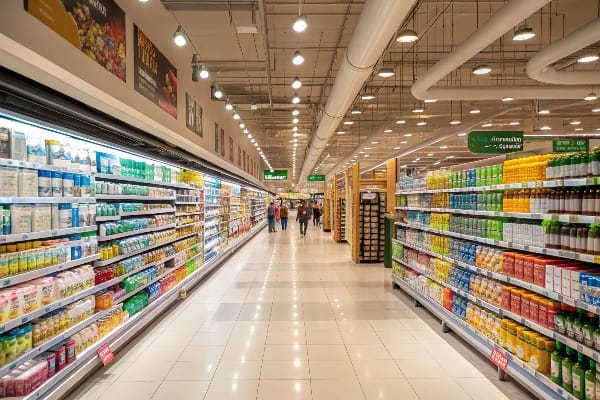
The decisions I lock before design
I define the hero SKU13 and the support SKUs. I set good/better/best price steps. I pick the display form that fits the store: floor, counter, pallet, shelf tray, or clip strip. I match print method to volume: digital for small runs and fast changes; litho or flexo for scale. I choose recycled content goals14 and water-based inks to align with brand values and retailer rules. I set a strength spec so units survive high-traffic weeks. I align logistics with flat-pack and simple assembly. I plan a two-week test window and a six-week roll plan. I track units per day, attach rate, and damage rate. These choices make execution simple and reduce surprises when raw paper prices swing or when lead times shift.
| Decision | Options | Signal to choose |
|---|---|---|
| Display format15 | Floor / Counter / Pallet | Traffic and basket goal |
| Digital / Litho / Flexo | Run size and speed | |
| Strength | Single-wall / Reinforced | Load and humidity |
| Sustainability16 | PCR% / inks | Retailer policy |
How can stores communicate effectively with customers through merchandising and displays?
People do not read long copy in aisles. They read signs that feel human and useful. I write like I speak. I keep it kind and clear.
Stores communicate well when they use short benefit lines, honest price cues, tidy layout, and helpful add-on prompts that guide the next step without pressure.
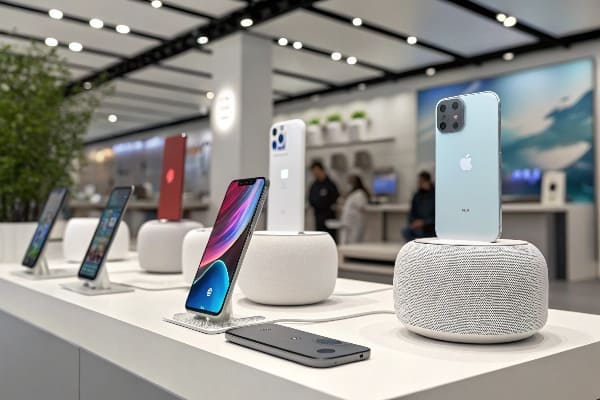
My communication playbook for real shoppers
I write one headline that names the job: “Ready to hunt safer today.” I add one support line like “Add bolts and wax in one grab.” I place a QR that opens specs and a 30-second use clip. I use icons for benefits like safety17, speed, and weight. I keep color calm so the product leads. I avoid jargon. I put price and benefit together. I place a small “Don’t forget” panel with the top add-on. I test two versions in one store and keep the faster seller. I learned this during a tight launch window for a U.S. client with strict dates. We met the window because the copy was simple and the modular display18 shipped flat and built in minutes.
| Message piece | Best practice | Result |
|---|---|---|
| Headline | Say the job | Fast intent19 |
| Support line | One proof | Trust20 |
| Price cue | Clear ladder | Choice |
| Add-on prompt | “Complete the kit” | Basket lift |
What display techniques are used in visual merchandising?
Teams love trends, but the core tools stay the same. I focus on sight, touch, and flow. I add tech only when it helps the decision.
Effective techniques include color blocking, vertical brand blocks, rule-of-three grouping, focal headers, live demo zones, QR video support, and modular trays for fast restock and clean lines.

Techniques that work with cardboard displays
I use color blocks to guide the eye from left to right. I stack vertical brand blocks to build recognition. I group in threes to create balance. I place one focal header with a clear benefit. I add a small demo zone if the product needs touch. I include QR codes21 for quick specs or AR try-ons in beauty. I design modular trays with restock marks and hidden supports. I choose matte coatings to cut glare. I plan for club stores with pallet displays that roll from truck to floor. I pick recycled board22 when the brand wants to show its values. I saw this resonate in Europe where shoppers expect eco choices. I plan short digital print runs for seasonal themes. I keep teardown and recycling easy so staff like the unit and keep it neat.
| Technique | How I apply it | When to use |
|---|---|---|
| Color blocking23 | One color per tier | Multi-SKU sets |
| Rule of three24 | 3 facings per story | Balance and focus |
| Focal header | One clear benefit | New launches |
| Modular trays | Snap-in bays | Fast restock |
Conclusion
Cross-merchandising works when I keep one job clear, limit choices, match the right display form, and speak simply. Cardboard displays make this fast, flexible, and cost-smart.
Understanding cross-merchandising can enhance your retail strategy, improving sales and customer experience. ↩
Learn the best practices for creating impactful cardboard displays that attract customers and boost sales. ↩
Understanding attach rate can help you optimize product placement and increase sales. ↩
Reducing time to pick enhances customer experience and boosts efficiency in your retail operations. ↩
Explore this link to understand how cardboard displays can enhance product visibility and sales in retail environments. ↩
Discover how digital print technology can streamline your packaging process and allow for quick design changes. ↩
Exploring this link will provide insights into effective pricing strategies that can enhance your marketing efforts. ↩
This resource will guide you on documenting product strength tests, ensuring reliability and customer trust. ↩
Understanding sightlines can enhance your retail display strategy, ensuring products are effectively showcased. ↩
Exploring QR code usage can improve customer engagement and provide instant access to product information. ↩
Understanding the optimal SKU count can significantly reduce choice stress for customers, enhancing their shopping experience. ↩
Exploring the ideal copy length can help you create concise and effective product descriptions that facilitate faster scanning by customers. ↩
Understanding the concept of a hero SKU can help you optimize product placement and sales strategies. ↩
Exploring recycled content goals can enhance your sustainability efforts and align with consumer preferences. ↩
Understanding display formats can enhance your retail strategy and improve customer engagement. ↩
Exploring sustainability in packaging can help align your business with eco-friendly practices and consumer preferences. ↩
Exploring safety practices can enhance your understanding of effective product presentation and customer assurance. ↩
Learning about modular displays can provide insights into optimizing space and improving customer engagement in retail. ↩
Understanding fast intent can enhance your marketing strategies and improve customer engagement. ↩
Building trust is crucial for customer loyalty; explore effective strategies to strengthen your brand’s credibility. ↩
Explore how QR codes can enhance customer engagement and provide quick access to product information. ↩
Learn about the environmental benefits of using recycled board and how it can improve brand perception. ↩
Explore this link to understand how color blocking can enhance visual appeal and sales in retail. ↩
Learn about the rule of three to create balanced and focused displays that attract customers effectively. ↩



